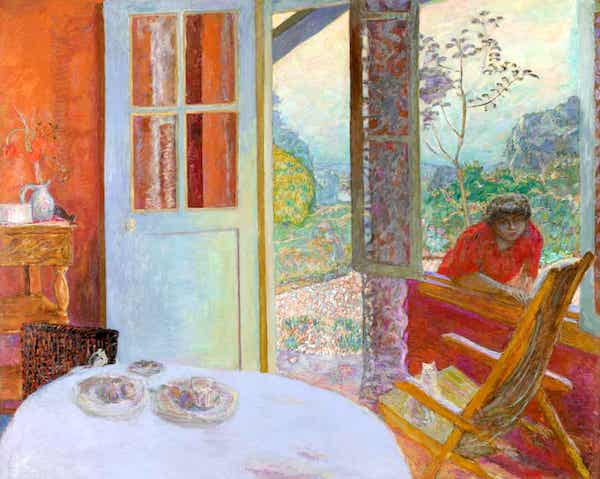Poetry from Image
“This is not an anecdote about a cat and a squirrel, it is about the living geography of landscape as it regularly contorts itself into an occasion for art. Spontaneously, with no need for embellishment because this is what the universe does all the time; you just have to be awake while it happens. For in the nature of gifts it doesn’t last, and all the loose ends have to be tied up simultaneously, on the spot—you can’t go back later and gather up the parts you missed. Nope.”—Anita Sullivan
On the Other Hand
By Anita Sullivan

A person at the poetry reading raises her hand: “Do you write from image, or from idea?” she asks. “I don’t know,” I say. “Are those my only choices?”—Anita Sullivan
EUGENE Oregon—(Weekly Hubris)—1 December 2021—I see something out my front window—a white cat stuck in an opening halfway up a board fence. This space, where a board used to be, is about the right width for the cat to wedge there: uncomfortably, precariously, but not painfully. The cat is facing away from me, looking into the yard next door where she lives.
This is a cat who is young, healthy but never seems to do very much. Along with several other neighborhood cats, she comes into our yard every day to stalk birds at the feeders. From what I’m able to tell, she’s a dud as a Great White Hunter. Not much else going for her either, like beauty, affection, personality, that sort of thing. She’s just blah. This is the first time I’ve seen her do anything worth mentioning.
The white cat sees a red squirrel in a cherry tree beside the gap in the fence, and remains motionless in her slot while she observes her fellow animal in a languid fashion. Likely she is rehearsing the possibility of leaping out and catching it (a universal cat fantasy, I believe) or even perhaps imitating it as it scurries along the branches of the half dead tree a few feet from her face.
The squirrel has a walnut in its mouth, as do 89.4 percent of the squirrels at this time of year. They harvest them from a tree next door, but cross into my yard to bury them, or just as often to eat them, dropping shells all over the grass. A great transfer of nuts thus takes place every year between yards. So far as I can tell, nothing much comes of this.
The squirrel proceeds to circle its way up the cherry tree, reappearing on a branch that hangs directly over the cat. The cat leans her head back and slowly swivels it to trace the squirrel’s path, until her face seems to come loose and lie flat on top of her neck, like a jar lid. Not many cats are curious enough to turn their heads that far. This does not fit my comfortable stereotype of this cat as stupid. Muttering, I sort through various explanations of what is happening.
Swivel—Swivel, yes, that’s the word I want! Across my imagination sprints an image of the Cheshire Cat from Alice in Wonderland, thus connecting the whole scenario with something mythical. We have crossed temporarily into the realm of magic. Will it hold?
What I have stumbled into here is not an image but an entire action—a story taking place with no words yet—one that unleashes face, swivel, sly, moon, alongside a pinch of aberration, into a static landscape of intersecting shapes.
This is not an anecdote about a cat and a squirrel, it is about the living geography of landscape as it regularly contorts itself into an occasion for art. Spontaneously, with no need for embellishment because this is what the universe does all the time; you just have to be awake while it happens. For in the nature of gifts it doesn’t last, and all the loose ends have to be tied up simultaneously, on the spot —you can’t go back later and gather up the parts you missed. Nope.
![]()
To order Anita Sullivan’s books, The Rhythm Of It and/or And if the Dead Do Dream, click on the book covers below.



